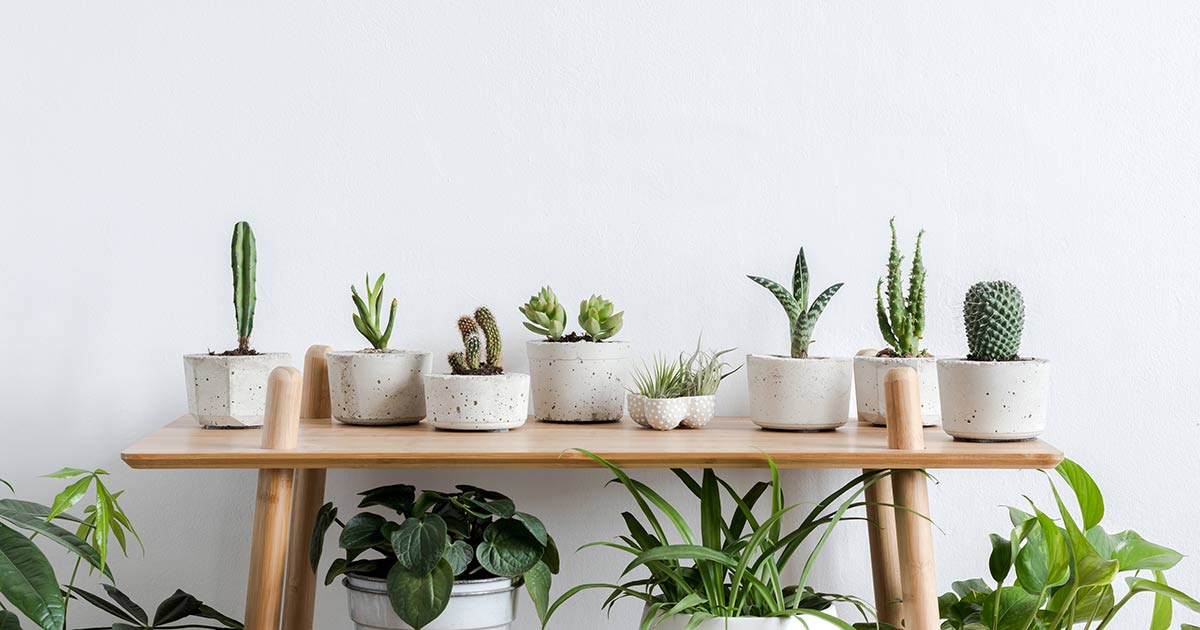Indoor Gardening And Houseplants Website:
Welcome to the exciting world of indoor gardening and houseplants! Here at the Indoor Gardening and Houseplants Website, we’re all about helping you bring the beauty of nature into your home.
Whether you’re a seasoned plant parent or just starting your green journey, our website is your one-stop destination for all things indoor gardening. From choosing the perfect houseplants to caring for them with expert tips, we’ve got you covered.
Get ready to transform your living space into a lush oasis that not only adds a touch of green to your surroundings but also offers numerous health benefits. So, grab your gardening gloves and let’s dive into the wonderful world of indoor gardening together!

Indoor Gardening and Houseplants Website: A Guide to Greening Your Home with Style
Indoor gardening and houseplants have become increasingly popular in recent years as more people look to bring a touch of nature into their homes. With the rise of urban living and limited outdoor space, indoor gardening offers a convenient and accessible way to enjoy the benefits of plants and greenery. In this article, we will explore the world of indoor gardening and houseplants websites, providing you with detailed information on how to create your own indoor oasis and where to find the best resources online.
1. The Benefits of Indoor Gardening
Indoor gardening offers a range of benefits that go beyond just adding beauty to your home. First and foremost, plants are natural air purifiers, removing toxins and releasing oxygen into the air. This can lead to improved air quality and a healthier living environment. Additionally, studies have shown that being around plants can reduce stress, improve mood, and increase productivity. Indoor gardening also provides a sense of connection with nature, even in urban or small living spaces.
When it comes to indoor gardening, the possibilities are endless. From small succulents adorning your windowsill to lush tropical plants filling a corner of your living room, there is a plant for every space and every style. Indoor gardening also allows for year-round gardening and the ability to tend to plants regardless of the weather outside. Whether you’re a seasoned gardener or just starting out, indoor gardening provides an opportunity to flex your green thumb and create a personal oasis in your home.
2. The Role of Houseplants Websites
Houseplants websites play a crucial role in the world of indoor gardening. They serve as invaluable resources for information, inspiration, and purchasing plants and gardening supplies. These websites often offer a wealth of articles and guides that cater to both beginners and experienced gardeners alike. From tips on plant care and maintenance to creative ideas for displaying plants in your home, houseplants websites provide a wealth of knowledge for anyone looking to embark on an indoor gardening journey.
In addition to information, houseplants websites offer a wide variety of plants for sale. With just a few clicks, you can browse through an extensive selection of plants and have them delivered right to your doorstep. These websites often provide detailed descriptions and care instructions for each plant, ensuring that you have all the information you need to keep your new green friends healthy and thriving. Some houseplants websites even offer subscription services, allowing you to receive new plants on a regular basis and expand your indoor garden collection.
3. Finding the Best Indoor Gardening and Houseplants Websites
With the abundance of indoor gardening and houseplants websites available online, it can be overwhelming to choose the best ones for your needs. Here are a few tips to help you find the most reliable and informative websites:
1. Research and read reviews: Before committing to a website, take the time to research and read reviews from other customers. This will give you insights into the website’s reputation, customer service, and the quality of their products.
2. Check for a wide variety of plants: Look for websites that offer a diverse range of plants, from popular favorites to more unique and rare species. This will ensure that you have plenty of options to choose from and can find the perfect plants for your home.
3. Consider user-friendly interfaces: A user-friendly website with clear navigation and well-organized categories will make your shopping experience much more enjoyable and efficient. Look for websites that are easy to use and provide a seamless browsing and purchasing process.
4. Seek out educational resources: In addition to offering plants for sale, the best houseplants websites will also provide educational resources such as care guides, blog posts, and videos. These resources can help you expand your knowledge and become a more confident indoor gardener.
By following these tips, you can find reputable and reliable indoor gardening and houseplants websites that will cater to all your gardening needs, while also offering a wealth of knowledge and inspiration to help you create your own indoor jungle.
The Importance of Choosing the Right Plants for Your Indoor Garden
The plants you choose for your indoor garden can make all the difference in creating a vibrant and thriving space. Not all plants are suitable for indoor conditions, so it’s important to choose species that are well-suited to your environment and lifestyle. In this section, we will explore the factors to consider when selecting plants for your indoor garden and provide recommendations for different types of spaces.
1. Light Requirements
One of the most crucial factors to consider when choosing plants for your indoor garden is their light requirements. Different plants have different light preferences, ranging from low light to bright, indirect light. Assess the lighting conditions in your home and choose plants that can thrive in those conditions. If your home has limited natural light, consider plants that can tolerate low-light conditions, such as snake plants, pothos, or ZZ plants. If you have ample sunlight streaming in, opt for plants that prefer bright, indirect light, like fiddle leaf figs or calatheas.
Subheading: Low-Light Tolerant Plants
When it comes to low-light tolerant plants, there are several options to choose from. These plants can thrive in areas with minimal natural light and are perfect for spaces like bedrooms, offices, or bathrooms with small windows. Here are a few examples of low-light tolerant plants:
1. Snake Plant (Sansevieria): Snake plants are known for their hardiness and ability to thrive in low-light conditions. They have striking, upright leaves and are excellent air purifiers.
2. Pothos (Epipremnum aureum): Pothos is a popular choice for indoor gardening enthusiasts due to its versatility and ease of care. It has trailing vines with heart-shaped leaves and can tolerate a wide range of light conditions.
3. ZZ Plant (Zamioculcas zamiifolia): ZZ plants are known for their glossy, dark green leaves and their ability to tolerate low-light environments. They are drought-tolerant and require minimal maintenance.
Remember to rotate your low-light plants occasionally to ensure even growth, as they will naturally grow towards the light source.
Continued in next message…
Key Takeaways:
– Houseplants not only add beauty to your space but also improve air quality.
– Choose houseplants that thrive in low-light conditions if your space has limited sunlight.
– Provide adequate water, light, and nutrients to ensure the health of your indoor plants.
– Regularly check and address common issues like pests, diseases, and overwatering.
Frequently Asked Questions
Welcome to our Indoor Gardening and Houseplants Website! Here are some common questions people have about indoor gardening and houseplants, along with their answers.
1. How often should I water my indoor plants?
Watering frequency depends on various factors, such as the type of plant, potting mix, temperature, and humidity levels. A good rule of thumb is to check the moisture level of the soil before watering. Stick your finger about an inch into the soil – if it feels dry, it’s time to water. However, different plants have different water requirements, so it’s important to research your specific plant for more precise instructions.
When watering, ensure that water drains properly from the bottom of the pot and doesn’t accumulate, as this can lead to root rot. It’s better to underwater than overwater, as overwatering can suffocate the roots and cause damage. Observe your plants regularly and adjust the watering schedule accordingly.
2. What are some low-maintenance houseplants for beginners?
If you’re new to indoor gardening, there are several low-maintenance houseplants that are perfect for beginners. Snake plants (Sansevieria), pothos (Epipremnum aureum), and ZZ plants (Zamioculcas zamiifolia) are excellent choices. These plants are known for their resilience and ability to tolerate a wide range of light and humidity conditions.
Another beginner-friendly option is the peace lily (Spathiphyllum), which thrives in low to medium light and can signal when it needs water by wilting slightly. Spider plants (Chlorophytum comosum) are also easy to care for and have beautiful trailing foliage. Start with these forgiving plants to boost your confidence as an indoor gardener.
3. How do I prevent pests from attacking my indoor plants?
Pests can be a common issue for indoor plants, but there are steps you can take to prevent or manage infestations. Firstly, regularly inspect your plants for signs of pests, such as webs, brown spots, or visible insects. Catching the problem early makes it easier to control.
One preventive measure is to keep your plants clean. Dust can attract pests, so gently wipe the leaves with a damp cloth occasionally. Additionally, avoid overwatering and improve air circulation around your plants to reduce the risk of fungal diseases that can attract pests.
4. Can I grow vegetables indoors?
Absolutely! Many vegetables can be grown indoors, allowing you to enjoy fresh produce year-round. Leafy greens, such as lettuce, spinach, and kale, are well-suited for indoor gardening. They require minimal space and can even be grown hydroponically.
Other vegetables that can thrive indoors include tomatoes, peppers, and herbs like basil, parsley, and mint. Providing sufficient light and caring for the plants’ specific needs are key to successful indoor vegetable gardening. Consider using grow lights if your indoor space lacks natural sunlight.
5. How do I choose the right pot for my indoor plants?
The choice of pot for your indoor plants can impact their overall health and growth. When selecting a pot, ensure it has drainage holes at the bottom to prevent water from pooling and causing root rot. Plastic, ceramic, and clay pots are popular choices, each with its own benefits.
Consider the size of the pot while choosing. If your plant is small, avoid using a pot that is too large, as excess soil can retain water and lead to overwatering. On the other hand, if your plant has outgrown its current pot, opt for a slightly larger one to accommodate its growth. Choose a pot that complements your indoor aesthetic and provides adequate space for your plant’s root system to thrive.

WEEKLY PLANT SHOP ROUTINE! | Running an Online Houseplant Shop from Home!
Summary
So there you have it, indoor gardening and houseplants can be super fun! You can create your own mini garden inside your home, even if you don’t have a big backyard. All you need is a sunny spot and some plant friends.
Having indoor plants is not only cool, but it also has lots of benefits. They can make your home look beautiful and fresh, and they can even help clean the air you breathe. Plus, taking care of plants can teach you about responsibility and patience. So why not grab some pots, soil, and seeds, and start your very own indoor garden today? Happy gardening!
